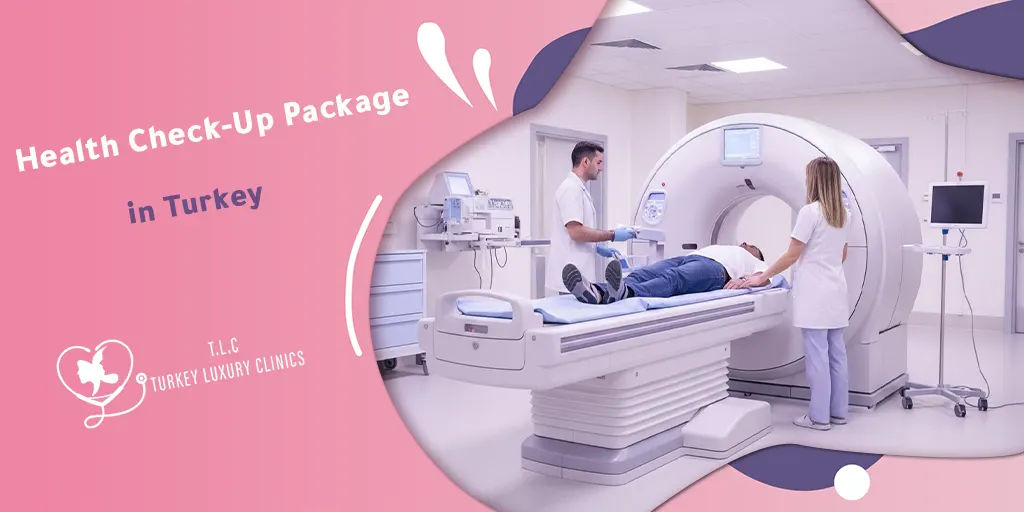- - What Are the End-Stages of Parkinson's?
- - What are Symptoms of End-Stage Parkinson's Disease?
- - Motor Symptoms of End-Stage Parkinson’s
- - Non-Motor Physical Symptoms of End-Stage Parkinson's
- - Mental and Emotional Symptoms of End-Stage of Parkinson's
- - Major Risks Leading to Death in End-Stage Parkinson’s Disease
- - Benefits of Advanced Therapies DBS and MRgFUS
- - What Are the Signs of End of Life with Parkinson’s?
- - How to Care for Patients at End-Stages Parkinson’s Disease
- - Parkinson’s Advanced Therapy in Turkey Luxury Clinics
- - FAQs About Parkinson’s Death Signs
Parkinson’s disease is a progressive neurological disorder that affects movement, cognition, and overall quality of life.
While Parkinson’s itself is not directly fatal, the end-of-life stage is marked by severe disability and complications that can become life-threatening. When these symptoms deteriorate rapidly, it may be considered as Parkinson’s death signs.
Signs of end-stage Parkinson's disease include severe mobility issues, difficulty with swallowing and breathing, increased frequency of infections, and significant cognitive decline
Understanding these advanced symptoms is crucial for caregivers and families to provide appropriate support and maintain quality of life.
Discover the key signs, symptoms, and risks of end-stage Parkinson’s disease, and learn how to provide compassionate and effective care during this critical phase.
What Are the End-Stages of Parkinson's?
The end stage of Parkinson’s disease is stage 5 on the Hoehn and Yahr scale, it involves severe motor and non-motor impairments.
At this stage, patients are often wheelchair-bound or bedridden and require round-the-clock care due to severe motor impairment and non-motor symptoms, including swallowing and speech difficulties, and cognitive decline, such as dementia.
Common symptoms include extreme stiffness, difficulty moving, swallowing and speech problems, and cognitive decline such as dementia.
Parkinson’s is not a fatal disease and it does not kill affected people directly. However, complications like falls, incontinence, pneumonia, and pressure ulcers are also frequent in the last stage of Parkinson's and are the leading causes of death.
Read more about How Long Can You Live With Parkinson’s: Methods to Improve Life Expectancy
What are Symptoms of End-Stage Parkinson's Disease?
The end stage of Parkinson's disease is characterized by a severe worsening of motor and non-motor symptoms, leading to a high degree of disability and the need for around-the-clock care.
Key features include extreme immobility, often requiring a wheelchair or being bedridden; severe difficulty with swallowing (dysphagia) and communication; and significant cognitive decline, such as dementia. Complications like pneumonia and pressure ulcers are common.
Motor Symptoms of End-Stage Parkinson’s
Tremors, stiffness, and slow movements become more pronounced. Walking may require a wheelchair, and balance issues increase the risk of falls.
Severe Fatigue and Limited Mobility
Severe fatigue is common, with patients spending most of their day in bed or a chair. This reduced physical endurance makes even basic tasks exhausting and increases dependence on caregivers.
Severe Mobility Impairment
Patients may lose the ability to walk or stand independently, often requiring a wheelchair or becoming completely bedridden. Limited mobility increases the risk of falls, fractures, and long-term complications such as pressure ulcers.
Muscle Rigidity and Stiffness
Muscle rigidity becomes extreme, making movement and repositioning difficult. This stiffness affects not only walking and posture but also daily activities such as dressing, bathing, and turning in bed.
Postural Instability and Balance Issues
Balance problems worsen in the late stages, making falls more frequent and dangerous. Neurogenic orthostatic hypotension (NOH) can cause dizziness or fainting, which further increases the risk of falls. Preventive strategies include physical therapy, mobility aids, and home safety adaptations.
Non-Motor Physical Symptoms of End-Stage Parkinson's
In the end stage of Parkinson's disease, non-motor physical symptoms can significantly impact daily life and overall health. These symptoms go beyond movement difficulties and include challenges such as trouble swallowing, communication problems, and disruptions in autonomic functions like digestion and blood pressure regulation.
Difficulty Swallowing and Eating:
Swallowing difficulties (dysphagia) are a common and serious issue in end-stage Parkinson's disease (PD), resulting from the progressive stiffness and slowness of the muscles in the jaw, tongue, and throat affects how effectively you swallow.
Disphagia and end-stage Parkinson’s swallowing issues make it harder to chew or swallow food safely, which can lead to malnutrition or aspiration pneumonia. Also, this means that food or drink can be at risk of going down the wrong way and entering your airway. Consider a Parkinson's feeding tube to help ensure adequate nutrition and reduce the risk of choking or aspiration.
Breathing Troubles
In end-stage Parkinson's, breathing difficulties can include shortness of breath, shallow and irregular breathing, and a reduced ability to cough effectively due to muscle weakness and stiffness.
Speech and Communication Challenges:
Speech may become soft, slurred, or difficult to understand. Some patients may lose the ability to speak entirely, resulting from weakened or rigid muscles in the mouth, tongue, and vocal cords, making speech soft, slurred, or sometimes completely lost.
Autonomic and Non-Motor Symptoms
Many patients in the last stages of Parkinson's experience constipation, urinary problems, and low blood pressure. These symptoms often worsen in the end stages, affecting both physical health and overall quality of life. These symptoms include:
- Constipation: Caused by slowed movement of the digestive tract due to impaired autonomic nervous system function.
- Urinary issues: Result from bladder muscle dysfunction and reduced control of sphincters.
- Low blood pressure (orthostatic hypotension): Happens because the autonomic nervous system cannot properly regulate blood pressure when standing.
Mental and Emotional Symptoms of End-Stage of Parkinson's
In the end stages of Parkinson’s disease, patients often face significant mental and emotional challenges. Cognitive decline, mood changes, and sleep disturbances become more pronounced, affecting both daily functioning and overall quality of life.
Cognitive Decline
In the final stages of Parkinson’s, patients often experience memory loss, confusion, and dementia-like symptoms. This affects their ability to make decisions, recognize loved ones, and manage daily activities, increasing the need for full-time care and supervision.
Sleep Disturbances
Sleep problems such as insomnia, restless legs, and frequent nighttime awakenings are common. These issues can worsen fatigue, reduce daytime functioning, and increase irritability for both patients and caregivers.
Emotional Symptoms
Mood changes like anxiety, depression, and frustration may become more pronounced. Emotional distress can affect quality of life, social interactions, and the ability to cope with other Parkinson’s symptoms, making caregiver support essential.
Major Risks Leading to Death in End-Stage Parkinson’s Disease
Falls in Advanced Parkinson’s
In the late stages of Parkinson’s disease, balance issues, severe motor impairments, and neurogenic orthostatic hypotension (NOH) make falls a frequent and dangerous problem. Falls can result in hip fractures, traumatic brain injuries, and a higher risk of mortality. Early recognition and preventive measures—such as physical therapy to improve balance, proper walking aids, home safety modifications, and regular bone density checks—can reduce fall-related complications.
Bedsores and Pressure Ulcers
Reduced mobility and prolonged time in bed or a wheelchair increase the likelihood of developing pressure ulcers. Untreated bedsores can become infected, sometimes leading to sepsis, a life-threatening complication. Preventive strategies include frequent repositioning, using pressure-relieving cushions, maintaining good nutrition, and monitoring skin integrity daily.
Pneumonia and Swallowing Difficulties
Dysphagia, or severe swallowing difficulties, is common in end-stage Parkinson’s disease. This can cause food or liquids to enter the lungs, leading to aspiration pneumonia—a leading cause of death in late-stage PD patients. Weak cough reflexes further increase the risk of lung infections. Early assessment by a speech-language pathologist, swallowing therapy, and modified diets (soft foods, thickened liquids) can help reduce these risks.
Other Contributing Risks
Advanced Parkinson’s patients are also vulnerable to dehydration, malnutrition, urinary tract infections, and sudden cardiac events due to cumulative frailty. Regular medical monitoring and supportive care are essential to detect early warning signs and prevent severe complications.
Benefits of Advanced Therapies DBS and MRgFUS
While medications help manage symptoms, some patients with Parkinson’s disease may benefit from advanced therapies like Deep Brain Stimulation (DBS) and MR-Guided Focused Ultrasound (MRgFUS). These treatments are typically more effective before the disease reaches the very final stage, and can help:
- Reduce tremors, stiffness, and involuntary movements
- Improve balance and mobility
- Minimize fluctuations in response to medications
It is important to note that these therapies do not cure Parkinson’s and are less effective once a patient has reached full end-stage disability.
However, for patients in moderate to advanced stages, early consideration of DBS or MRgFUS can help slow the progression of disabling symptoms, improve daily function, and reduce risks that may contribute to severe complications, such as falls or swallowing difficulties.
Consulting a neurology center that specializes in these therapies allows patients and families to explore safe, personalized options for maintaining independence and quality of life for as long as possible. Discover Life After DBS Surgery Recovery, Maintenance and Improvement
What Are the Signs of End of Life with Parkinson’s?
The "end of life period" is the time when a person has an advanced, progressive, and life-limiting illness, and is likely to die in the coming months or years
The end-of-life period for Parkinson's is challenging to predict precisely, but it is often characterized by a rapid decline in function and increased frailty over a period that can range from months to years. During this stage, individuals often require full-time assistance with daily activities, experience increased falls, cognitive decline (like dementia), and are more susceptible to complications such as infections and pneumonia, which become common causes of death.
These signs don’t always mean that death is near, but they help families and caregivers understand that the person requires closer monitoring, comfort-focused treatment, and thoughtful daily support.
Common signs include:
- Cognitive changes or periods
- Confusion
- Significant difficulty swallowing (severe dysphagia)
- Noticeable speech problems (dysarthria)
- Very slow or limited movement (advanced bradykinesia)
- Breathing difficulties
- Episodes of aspiration pneumonia
- Trouble eating or drinking enough
- Incontinence
- Disturbed sleep or severe insomnia
Even at this stage, many families find that with the right medical support, careful symptom management, and a calm, reassuring environment, the person can experience comfort, connection, and moments of peace. The goal is not to cure the disease, but to ensure the person is cared for with dignity and compassion during this sensitive period.
How to Care for Patients at End-Stages Parkinson’s Disease
Caring for someone in the last stages of Parkinson’s focuses on comfort, dignity, and quality of life. This includes symptom management, daily support, and emotional care in collaboration with healthcare professionals.
1. Symptom and Medical Care
- Manage pain and stiffness: Work with healthcare providers and consider palliative or hospice support.
- Adjust medications to balance symptom relief and side effects
2. Daily Support
- Mobility and safety: Use wheelchairs, walkers, and assist with safe movement to prevent falls.
- Hygiene: Help with bathing, dressing, oral care, and incontinence. Reposition bedridden patients regularly to prevent pressure sores.
- Environment: Keep surroundings calm and quiet; gentle stretching can reduce stiffness.
3. Feeding Tube and Nutrition in End-Stage Parkinson’s Disease
In the end stages of Parkinson’s disease, using a feeding tube can help ensure adequate nutrition and reduce the risk of choking or aspiration. Providing fluids or very soft foods can also facilitate safer swallowing, improve comfort, and help minimize suffering for patients with severe dysphagia. Proper nutritional support is essential for maintaining strength, preventing complications, and enhancing overall quality of life during this critical stage.
4. Emotional and Communication Support
- Provide reassurance and companionship; seek professional help if needed.
- Communicate clearly using simple language and non-verbal cues.
- Caregiver support: Schedule breaks and respite care to maintain your own well-being.
Parkinson’s Advanced Therapy in Turkey Luxury Clinics
For patients and families interested in exploring advanced therapies like DBS or MRgFUS, Turkey Luxury Clinics offers specialized neurology centers with experienced teams. They provide personalized assessments to determine which treatments may be suitable, helping patients maintain mobility, reduce symptoms, and improve quality of life safely and effectively.









.webp)
.webp)
.webp)
.webp)

